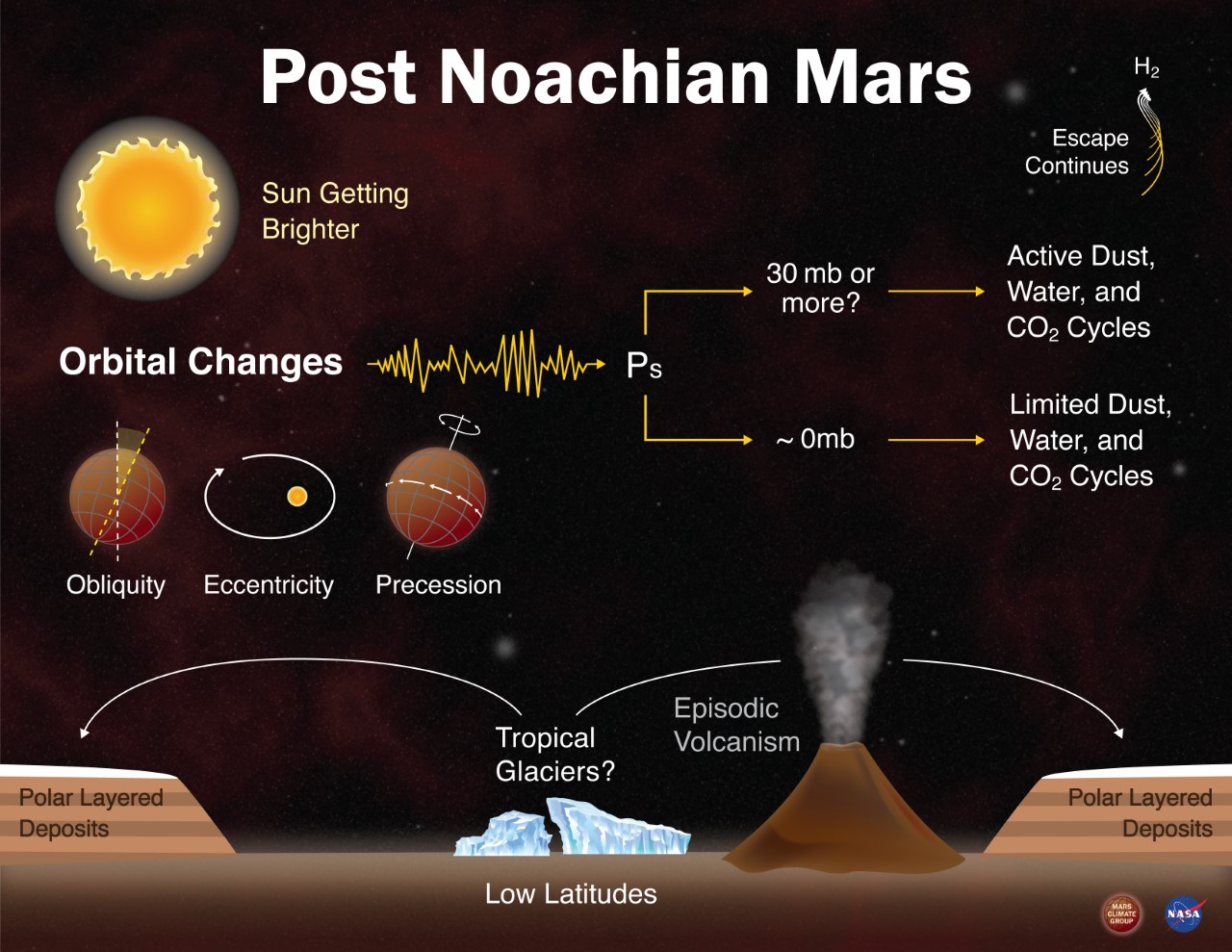Variations in Mars’ orbit parameters—obliquity, eccentricity, and season of perihelion—alter the latitudinal and seasonal distribution of sunlight, which results in changes to the climate over time. Some of the consequences of these oscillations include the collapse of the atmosphere at low obliquity, a potential increase in atmospheric dustiness and cloudiness at high obliquity, and the mobilization and redistribution of surface water ice reservoirs at all obliquities. We are working on improving our representation of clouds and their radiative effects to better determine the nature of orbit-forced climate change on Mars.
We use the NASA Ames Mars GCM to address questions relating to orbit-driven climate change on Mars. Click the links below to learn about our current projects on this topic.




























